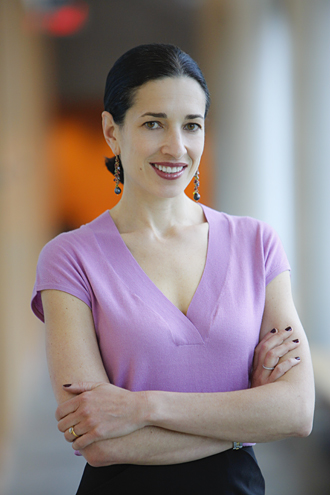If our two loves be one
 Photo/Mike Lovett
Photo/Mike LovettRamie Targoff
A Valentine’s Day without love poetry is as unthinkable as one without chocolates, even if these days most of us leave the rhyming to Hallmark.
Yet some of our literary tradition’s greatest and most sensual love poetry dates to the 17th century, a time most often associated with Puritanism. Fueled by the mantra “carpe diem” — Latin for seize the day — some of England’s most noteworthy poets generated a body of creatively erotic verse that is still the ne plus ultra of love poetry.
Brandeis English professor Ramie Targoff, an expert on Renaissance love poetry, celebrates these poets in a new book, “Posthumous Love: Eros and the Afterlife” (University of Chicago Press), due out in March. In it, she explores the extraordinary cultural and literary shifts that rocked 17th-century English poetry.
Just in time for Valentine’s Day, Targoff talked to BrandeisNOW about the endlessly tantalizing topic of love.
The English inherited an Italian literary tradition steeped in the idea of transcendent love. But when 16 and 17th-century English poets thought hard about this literary legacy, they rejected the possibility that love might extend beyond the grave, beyond mortal life. Why?
There’s no easy answer to this, but I think it had something to do with the Protestant Reformation, which fundamentally altered the way people understood the relationship between the living and the dead. In the Protestant church, widows and widowers were not encouraged to mourn excessively for their deceased spouse, they were prohibited from praying to the dead directly, and — if they were of child-bearing age — they were strongly encouraged to remarry. All of this meant that the idea of maintaining erotic ties to a deceased spouse was not part of the culture’s ideology.
English Renaissance “carpe diem” poetry seems strangely modern in its fascination with erotic love and sensuality. How do Brandeis students respond to these poets and poems?
I have really enjoyed teaching “carpe diem” poems in my Love Poetry class at Brandeis; students tend vastly to prefer reading Andrew Marvell or Robert Herrick — who are cynical and funny and insistent about the idea that love needs to happen today, not tomorrow — over Petrarch, for example, who seems content to wait another 20 or 30 years before meeting his beloved Laura in heaven. Students find this rather hard to relate to!
What poem would be your Valentine’s Day pick?
John Donne’s “Sun Rising” or “The Good Morrow,” or Herrick’s “Corinna’s Going A-Maying.”
Categories: Humanities and Social Sciences





